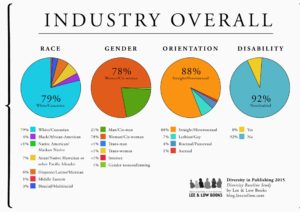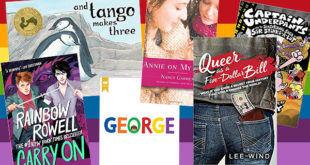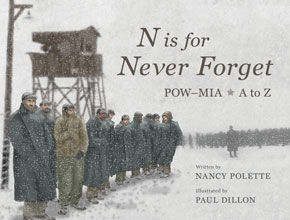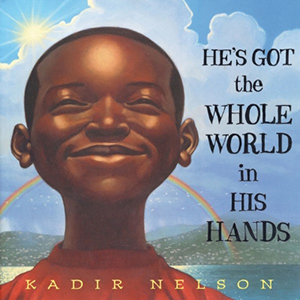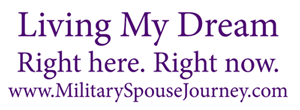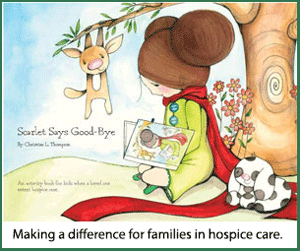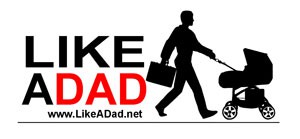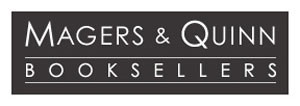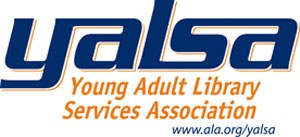Storytelling is one of the most vulnerable ways we communicate and translate our human identity, our unique differences, and what ultimately connects us together. The stories we are exposed to shape our understanding of the world, our interpretation of the past, and our view of the possibilities ahead. Good stories illuminate the essence of what it means to be human. They hold the power to inspire, empower, and enlighten readers from all communities.
“When we see someone like ourselves in books, it’s powerfully validating,” says Lee Wind, author of Queer as a Five-Dollar Bill. At the same time, “When we step into someone else’s shoes through the magic of reading, and they’re different from us in some way (different gender, or racial background, or ability, or religion, or affective orientation) it helps us have a level of empathy and understanding we didn’t have before we knew them through the book.”
People are multidimensional; we can’t define a person by one trait or one aspect of their background. Each person is a unique individual made up of all their physical and emotional qualities as well as their experiences, beliefs, and choices. To understand the bigger story, we need to read many diverse stories with multiple viewpoints from each community.
Lee says, “If there’s only one book with a transgender character, or one book with a Muslim character, that portrayal holds tremendous weight. Those characters are seen as archetypes of that identity. They’re not ‘a’ transgender character, they’re ‘the’ transgender character. Not ‘a’ Muslim but ‘the’ Muslim. We need many more books, with more diverse representations, so each character can be just that—a character. Because there is so much diversity within identities and so much intersectionality, too!”

Over 900 copies of “Queer as a Five-Dollar Bill” by Lee Wind were donated to LGBTQ and Allied Teens through a crowdfunding campaign. Here, Lee speaks to youth who received copies of his book at Camp Brave Trails in California.
Lee was acutely aware of this as a young reader. “As a young, very closeted gay boy, I experienced this,” he says. “Every book [I read] showed only straight people. There were no gay characters, except as terrible, frightening villains. It made me feel so alone. It also emboldened the bullies in my life—not that they were necessarily big readers, but they saw what I saw in the media—no positive portrayals of anyone gay. It made my coming out so much more difficult, and happen so much later than it might have otherwise.”
Cultivating a collective library of stories with an authentic portrayal of diverse characters is essential and, ultimately, the responsibility of all who create, curate, and consume those stories.
Progress
In recent years, movements like #WeNeedDiverseBooks and #OwnVoices have elevated the discussion around diverse publishing and, just as importantly, shed light on some of the challenges. #WeNeedDiverseBooks advocates for essential changes in the publishing industry to produce and promote literature that reflects and honors the lives of all young people. #OwnVoices recommends books with diverse characters written by authors from that same diverse community.
Studies from the Cooperative Children’s Book Center (CCBC) show an increase in the number of diverse books being published but notes: “We still have a long way to go before reflecting the rich diversity of perspectives and experiences within and across race and culture.” Increasing diversity among the authors and illustrators creating the books is key.
As Lee explains: “In the world of children’s books, the #WeNeedDiverseBooks movement realized that just advocating for more diverse characters didn’t fulfill their mission, because if it’s still the same basic group of straight white writers adding diverse characters, we haven’t made the progress we need to make. They realized we must advocate for more creators from underrepresented groups. And more diversity within publishing—the gatekeepers, including agents, editors, publishers, marketing, sales, PR, and then librarians, and booksellers and reviewers. The whole ecosystem of publishing needs a diversity initiative as an ongoing course correction. And, we shouldn’t forget about economic diversity. It takes years to get good at writing, and most writers who get that time have someone supporting them. This skews who writes. And low salaries in the book publishing industry contribute, because who can afford to live on an entry-level editorial salary? Those who get financial help from their families. This skews who works in publishing, and ultimately, what gets published. It’s a complicated problem.”
Book creators agree we need more stories from authors native to the communities they write about. All authors who write about diverse characters in their works must responsibly portray those characters and cultures.
Gatekeepers
Hannah Ehrlich, marketing and publicity director at Lee & Low Books, America’s largest multicultural children’s book publisher, says it’s also important that children who already feel marginalized see themselves as critical to the storyline. Lee & Low Books centers on marginalized characters as main characters, “where they get to be the hero of their own story rather than a secondary character in someone else’s story,” Hannah says.
The publisher’s goal is to produce books that are culturally authentic and that offer both mirrors and windows for every reader through a range of high-interest topics, meaningful themes, genres, and complexity.
The Lee & Low team, concerned that throughout the industry the majority of books about diverse characters were not written by people from those cultures, wanted to put more concrete statistics on why that was the case. In 2015, Lee & Low conducted a diversity baseline survey to measure the diversity among publishing professionals. The intent was to increase publishers’ accountability and ownership. The Lee & Low team will conduct a follow-up survey to measure whether or not initiatives to increase staff diversity are working and the impact that change may be having on the choice of books and authors.
Hannah challenges fellow publishers and editors to recognize they are all gatekeepers and to approach that authority with responsibility. “Books have power,” she says. “And we choose the books.”
Authentic Voices and Writing Responsibly
T.S. Ferguson, editor at Jimmy Patterson Books, agrees. “It’s not just our jobs to reflect these readers in our work, it’s our job to reflect them authentically, responsibly,” he says. “It can be … harmful to see yourself in a character that wasn’t written responsibly.”
T.S. coaches writers, not only at his imprint but also within the children’s writing community, to help writers ensure their characters and storylines are trustworthy. At a recent Society of Children’s Books Writers and Illustrators (SCBWI) conference, he told writers: “If you want to write responsibly, the first question you need to ask yourself once that idea starts to form in your head is, ‘Is this my story to tell? What do I think I can contribute positively and authentically to this conversation or to the portrayals of this community?’”
T.S. suggests that before putting in the time and energy to write a book with characters or storylines outside their native culture, writers consider if telling the story they have in mind requires an intimate knowledge of that community and whether or not the writer has that intimate knowledge.
“No matter how much research you do about a community, no matter how many people you talk to from a specific community, if you’re not a member of that community, you’re always going to be writing from the place of an outsider,” he says. Writers need to consider if, when writing outside their own community, they could potentially make a mistake that could hurt readers.
His first preference as editor is always an author telling a story from his or her native perspective, but he also recognizes that all authors if they are doing a good job of telling a story will have diverse characters from a variety of backgrounds.
“Interacting with people who identify differently from you is Research Step 1,” he says. “Look around at your circle of friends. If everyone is the same, think about what that means in terms of what you’re experiencing of the world and what you’re equipped to write about. … If you’re white, for instance, and you have no friends of color, or if you’re straight and have no queer friends, it’s important to think about how that’s impacting your understanding of the world. … We talk about wanting to write the world realistically, but one of the first steps is making sure you’re experiencing the world realistically as well. This is real world research … get out there and make friends with people from other communities, not as living and breathing google searches for your novel, but because it’s fun to meet people and make friends and experience the world.”
He also encourages writers to be avid readers. “Just like it’s important for you to be interacting with people outside your own identities, it’s imperative you’re reading books by and about people who identify differently than you. … There are people out there in other communities, and with other identities, telling their stories already and you should be reading them. Reading stories from authors who identify differently than you can give you insight into these communities that mere observation may not. And you should be reading multiple books by multiple authors within those communities, because just like in your own communities, not everyone is the same and one perspective is not going to give you a fully formed idea of what these communities are like. You’re not going to read The Hate U Give and fully understand the black experience, for example. You need to be well-read.”
Another challenge for writers is being careful not to perpetuate incorrect information or stereotypes. T.S. suggests writers always use source documents. “You can’t just read history books,” he says. “History books can skew the stories or leave out important details.” Read first-person accounts, memoirs, and archives, he says, and listen to interviews.
New Look at History
Original research was the spark for Lee’s novel Queer as a Five-Dollar Bill. “One of the big motivators of my own writing is discovering that, contrary to how history was taught to me, there were gay people in history,” he says.
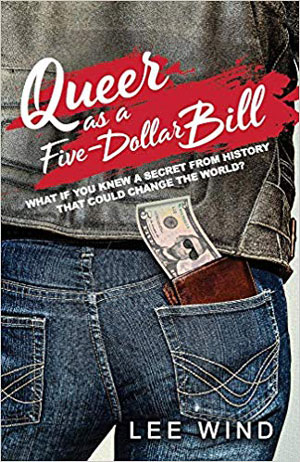
Wyatt, a bullied and closeted teen, triggers a backlash when he reveals historical evidence that Abraham Lincoln was gay.
When Lee heard about the letters Abraham Lincoln wrote to Joshua Fry Speed—letters that convince some people Lincoln was in love with Speed—he had to explore it for himself. “The idea that Abraham Lincoln—on Mt. Rushmore, on the penny, on the five-dollar bill!—was even maybe in love with another guy rocked my world,” he says.
Lee dug into the primary source materials and had a goose-bump moment. “Lincoln’s description of Joshua judging being with a woman but not feeling what he was supposed to matched how I felt dating girls exactly—and I became convinced that, yes, Abraham was in love with Joshua. And I couldn’t get out of my mind the idea that if I had a time machine and could go back and tell my fifteen-year-old self this, it would have changed my whole life. Maybe that reflection of someone everyone admires being gay, too, would have emboldened me to be more authentic sooner.”
But Lee doesn’t have a time machine. “So I decided to pay it forward,” he says, “and write a novel where a fifteen-year-old, who is gay and closeted and bullied (a lot like I was) discovers these same letters, and has the same goose-bump moment I did. And he knows how much Lincoln is loved in our world. And he decides to out Lincoln, because it will change how everyone feels about gay people, and it will solve all his problems. Trouble is, if someone really did make this information go viral, I imagine there would be a huge conservative backlash and media firestorm. So that’s what Wyatt faces in Queer as a Five-Dollar Bill.”
Lee wrote his novel to be a page-turning adventure as well as a crack in the facade of history as it’s still taught to teens today. “[There is] this idea that everyone important in history was a straight, white, cis-gendered, able-bodied, rich man from Europe. And that’s just not true. There were women, and people of color, and people with disabilities, and men who loved men, and women who loved women, and people who lived outside gender boundaries who made history, too. It’s just that their stories are often hidden or erased.”
For readers of all communities, seeing themselves in history is empowering. “If we know we have a past, we can believe there’s a place at the table for us today,” says Lee. “And if we know we have a place at the table today, we can imagine a limitless future! And that’s a gift I want to give young LGBTQ people. Heck, I want to give that to everyone!”
Finding Good Books
While CCBC stats show an increase in diverse books, it is not always easy for readers to access them. Librarians are increasingly recognizing and responding to the importance of making good diverse books available to their communities. In May 2019, Library Journal and School Library Journal offered a professional development course for librarians called Evaluating, Auditing, and Diversifying Your Collections.
Experienced librarians, university professors, and nonprofit leaders from a variety of diverse backgrounds guided participants through the process of evaluating books and media with an inclusive lens, giving tips for cultivating and promoting inclusive and equitable collections that include the experiences of LGBTQIA people, people of color, people with disabilities, non-binary or gender non-conforming people and ethnic, cultural, and religious minorities. In multiple sessions, the group walked through how to conduct a diversity audit to include wider perspectives, #OwnVoices, and how to be more responsive to the local communities they serve. They also discussed common stereotypes in books and media to be aware of, noting that some are easy to spot, while others require a more fine-tuned understanding of culture and history.
Panelist Rebecca Eunmi Haslam, 2015 Vermont State Teacher of the Year, believes that one of the guiding principles for doing equity and diversity work at our libraries is the belief that the contents of the collections need to serve as both windows and mirrors for patrons, reflecting back their own realities, but also offering new views and perspectives to enlighten and enrich.
In her closing keynote, Lisa Lucas, executive director of National Book Foundation, reminded librarians that offering diverse books to readers can connect them more deeply to the world around them, and ultimately, make it a better place for us all. “When we read, we have the chance to see the world through new perspectives and connect across differences and distances. The more diverse the stories and the more varied the voices, the more places a reader is able to go and the more life they are able to see and understand.”
Online book lists also help readers find a variety of recommended books. When Lee started his blog “I’m Here. I’m Queer. What The Hell Do I Read?” in 2007, it was in response to his finding only about 30 books for kids and teens with LGBTQ characters and themes.
“There was no safe space online where you could find out about the few books that were available,” he says. “Now, nearly twelve years later, there are well over 500 books listed on my blog, and that change is exciting… but with over 5,000 books for kids and teens traditionally published each year, with probably another 5,000 independently published, we still have so much further to go!”
A few of Lee’s picks, with comments about why these books are among his favorites:
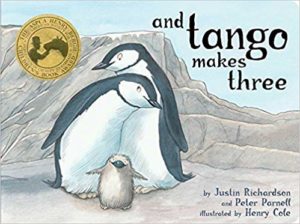 Picture Book:
Picture Book:
And Tango Makes Three by Justin Richardson and Peter Parnell, illustrated by Henry Cole
Being part of a two-dad family, this true story of a two-dad penguin family is one of my favorite picture books of all time! On Lee’s blog
Early Reader/Graphic Novel:
Captain Underpants and the Sensational Saga of Sir Stinks-a-Lot by Dav Pilkey
Love the gay future (revealed in book 12 of the series) for one of these heroes!
On Lee’s blog
Young Middle Grade:
George by Alex Gino
“George” is really Melissa—but how can this third grader be herself? So well done.
On Lee’s blog
YA Fantasy:
Carry On by Rainbow Rowell
The gay Harry Potter story I longed for…
On Lee’s blog
Annie On My Mind by Nancy Garden
A turning point for queer characters in teen novels, this lesbian love story was the first to have an ending that wasn’t tragic as “punishment” for the characters being LGBTQ. It was such a consistently banned book that I even wrote a love letter to it: On Lee’s blog
No matter where you find your reading list, we challenge you to select your next book from an author who writes from a perspective different from your own.
“When we look around our world, we see that—on the outside—a lot of people look different than we do,” says Lee. “Books help us get that we’re not that different on the inside.”
Lee Wind
Web/Blog: LeeWind.org
Facebook: /LeeWind
Twitter: @LeeWind
Instagram: @IamLeeWind
Lee’s book Queer as a Five-Dollar Bill was named a Book Life Prize semifinalist and one of Publishers Weekly’s top five independently published middle grade and YA books of 2018.
T.S. Ferguson
Twitter: @TeeEss
Lee & Low Books
Web: LeeandLow.com
Facebook: /LeeandLow
Twitter: @LEEandLOW
#DVPit
Pitch event for un-agented historically marginalized creators
Web: DVPit.com
Twitter: @DVPit_
#POCinPub
Connects people of color in publishing
Web: POCinPublishing.com
Twitter: @PocPub
Karen Pavlicin-Fragnito is an award-winning writer, publisher of Books Make a Difference magazine, and an Independent Book Publishers Association (IBPA) national board member. KarenPavlicin.com
This article was first published June 2019.
You may also be interested in the story of Mary Taris and why she started Strive Publishing:
Strive Publishing: Growing Community Uplifts African-American Stories & Dreams

